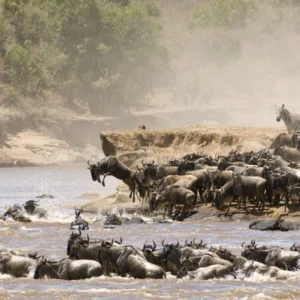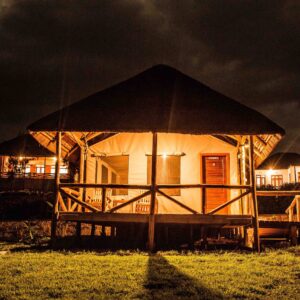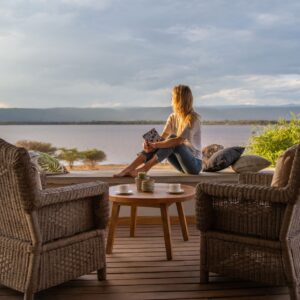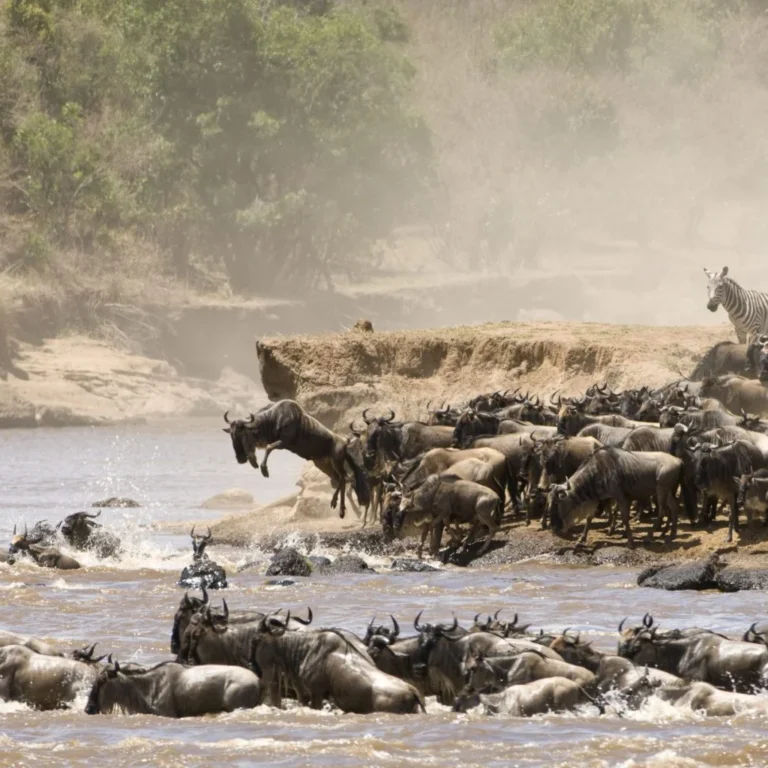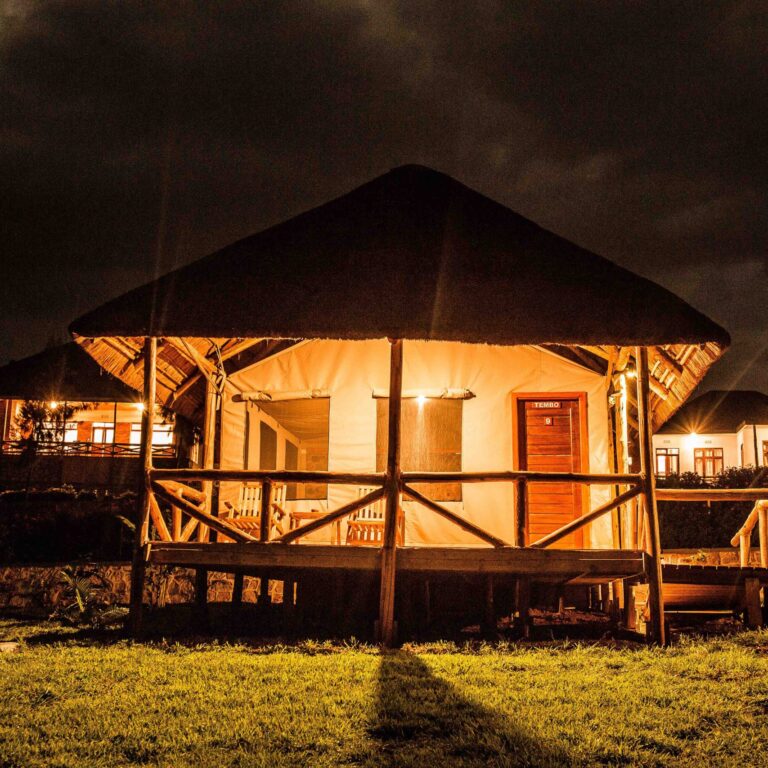The Ultimate Guide to Hygiene on Kilimanjaro Expeditions.
Mount Kilimanjaro, Africa’s highest peak, attracts adventurers from around the world, drawn by the challenge of conquering its snow-capped summit. However, while the allure of standing on the “Roof of Africa” is undeniable, maintaining proper hygiene during the expedition is equally crucial. Poor hygiene practices can lead to illness, discomfort, and a compromised experience. In this article, we delve into the essential hygiene tips that every climber must follow to ensure a safe and successful Kilimanjaro expedition.
Embarking on a Kilimanjaro expedition is an exhilarating and challenging adventure. Amidst the excitement of reaching Africa’s highest peak, maintaining proper hygiene is crucial for your health and overall experience. In this comprehensive guide, we cover everything you need to know about staying clean and healthy during your Kilimanjaro trek.
The Importance of Hygiene on Kilimanjaro
Before embarking on your Kilimanjaro trek, it’s important to understand why hygiene plays such a critical role. The trek to Kilimanjaro’s summit takes several days, with climbers spending extended periods in remote areas with limited access to basic amenities. The altitude, varying weather conditions, and strenuous activity increase the risk of illness. Maintaining good hygiene not only protects your health but also ensures the health of your fellow climbers and guides.
Water Purification: Ensuring Safe Drinking Water
One of the most significant hygiene challenges on Kilimanjaro is access to clean drinking water. The water sources on the mountain are natural streams and rivers, which can be contaminated. Drinking untreated water can lead to gastrointestinal infections and other illnesses, which can severely impact your ability to complete the trek.
Tips for Water Purification: Boiling: The most reliable method of water purification is boiling. Ensure that your water is boiled for at least one minute to kill any harmful pathogens.
Water Purification Tablets: These are an effective and lightweight solution for purifying water. Follow the instructions carefully, and give the tablets enough time to work before consuming the water.
Water Filters: Portable water filters can remove bacteria and protozoa from water, making it safe to drink. However, they may not be effective against viruses, so use them in combination with purification tablets.
Personal Hygiene: Keeping Clean on the Trek
Maintaining personal hygiene on Kilimanjaro can be challenging, but it is essential for your health and comfort. As you ascend, the temperature drops, and water becomes scarcer, making it harder to stay clean. However, there are several strategies you can employ to maintain cleanliness.
Hand Hygiene: Preventing the Spread of Germs Your hands are the primary way germs spread, so keeping them clean is critical. Proper hand hygiene reduces the risk of contracting illnesses like diarrhea, which can be debilitating during a trek.
Tips for Hand Hygiene: Hand Sanitizer: Carry a small bottle of hand sanitizer with at least 60% alcohol content. Use it frequently, especially before eating and after using the restroom.
Wet Wipes: Antibacterial wet wipes are another convenient option for cleaning your hands when soap and water are not available.
Gloves: In colder conditions, wearing gloves can help protect your hands from germs and keep them warm.
Body Hygiene: Staying Fresh on the Mountain
While full-body showers may not be feasible, there are ways to keep yourself relatively clean during the trek.
Tips for Body Hygiene: Wet Wipe Showers: Pack biodegradable wet wipes to clean your body each evening. Focus on areas prone to sweating, such as underarms and feet, to prevent body odor and infections.
Change of Clothes: Bring a sufficient number of moisture-wicking and quick-drying clothes. Changing into clean clothes each day helps prevent skin infections and improves comfort.
Foot Care: Your feet are your most important asset on the mountain. Keep them clean, dry, and warm. Change your socks regularly and use foot powder to prevent blisters and infections.
Sanitation: Proper Waste Disposal Proper sanitation is crucial to maintaining a clean environment and minimizing the risk of illness on Kilimanjaro. Waste disposal, particularly human waste, needs to be managed carefully.
Toilet Facilities: What to Expect
On Kilimanjaro, climbers will encounter a variety of toilet facilities, ranging from basic to primitive. In some campsites, there are long-drop toilets, which are simple pits dug in the ground. In more remote areas, portable toilets are often used.
Tips for Using Toilet Facilities: Personal Hygiene: Always use hand sanitizer or wash your hands with soap and water after using the toilet. This is essential to prevent the spread of germs.
Toilet Paper: Bring your own toilet paper, as it is not provided on the mountain. Pack used toilet paper in a resealable plastic bag to carry out with you.
Sanitary Products: Women should bring enough sanitary products for the duration of the trek. Used products should be packed out in a sealed bag and disposed of properly after the trek.
Leave No Trace: Minimizing Environmental Impact
Kilimanjaro is a UNESCO World Heritage site, and it’s important to minimize your environmental impact by following the “Leave No Trace” principles.
Tips for Waste Disposal: Pack Out Trash: Carry a small trash bag to store your waste, including food wrappers, tissues, and other non-biodegradable items. Dispose of the bag at designated areas after the trek.
Human Waste: If you need to relieve yourself in remote areas without facilities, dig a small hole at least 200 feet from water sources, and bury your waste. Cover the hole with soil and pack out any toilet paper.
Food Safety: Avoiding Foodborne Illnesses
Foodborne illnesses are a common concern on Kilimanjaro, as food is prepared and consumed in outdoor settings where hygiene standards can vary. Taking precautions with food safety is essential to avoid gastrointestinal issues.
Tips for Food Safety: Trust Your Guides: Choose a reputable trekking company with experienced guides who are trained in food safety. They should prepare food in a clean environment and use fresh ingredients.
Avoid Raw Foods: Stick to cooked foods, as they are less likely to harbor harmful bacteria. Avoid salads and raw vegetables been washed in untreated water.
Stay Hydrated: Drink plenty of fluids, but ensure that all water and beverages are purified.
Altitude and Health: Managing Hygiene at High Elevation
As you ascend Kilimanjaro, the altitude increases, and so do the challenges to your health and hygiene. The higher you go, the more critical it becomes to maintain proper hygiene, as your body’s immune system is under greater stress.
Managing Illness: Recognizing and Treating Common Issues
Altitude sickness, dehydration, and other health issues are common on Kilimanjaro. While hygiene won’t prevent altitude sickness, it can help prevent other illnesses that could exacerbate the condition.
Tips for Managing Illness: Stay Hydrated: Dehydration can worsen altitude sickness, so drink plenty of purified water.
Recognize Symptoms: Be aware of the symptoms of altitude sickness, including headaches, nausea, and dizziness. Inform your guide immediately if you experience any of these.
Medical Kit: Carry a basic medical kit with medications for common issues like diarrhea, altitude sickness, and headaches. Your guide should also have a more comprehensive medical kit.
Toilets During Kilimanjaro Expeditions
Public Toilets on Kilimanjaro: Public toilets are available at each campsite and are basic pit latrines. These toilets are simple structures with a hole in the ground, surrounded by a small wooden or tented shelter. They can be quite rudimentary and may not always be clean, so it’s important to bring your own toilet paper and hand sanitizer.
Toilets During Transitions Between Camps: During the daily treks between camps, there are no formal toilet facilities. Trekkers must find a secluded spot off the trail to relieve themselves. It is essential to follow Leave No Trace principles by burying human waste at least 6-8 inches deep and at least 200 feet away from water sources, trails, and campsites. Carry a small trowel and biodegradable toilet paper for this purpose.
Private Toilets on Kilimanjaro: For those seeking more comfort, private toilet tents are available from most trekking companies at an additional cost. These portable toilet tents include a chemical toilet or a portable toilet with a waste bag system. They provide a cleaner and more private option compared to public toilets. The trekking crew will set up and maintain the private toilet tent at each campsite.
Nighttime Toilet Visits: At night, it can be inconvenient and cold to leave your tent for a toilet visit. Many trekkers use a pee bottle inside their tent for nighttime use. This is a practical solution that allows you to avoid nighttime trips to the public toilets. Be sure to choose a wide-mouthed bottle with a secure lid and clearly label it to avoid any mix-ups.
How is Food Prepared During a Kilimanjaro Expedition?
Preparation by Professional Cooks. On a Kilimanjaro expedition. Food is typically prepared by professional cooks who are part of your trekking team. Cooks are experienced preparing meals in challenging conditions. Ensure food hygiene standards are met. They use fresh ingredients and adhere to safe food handling practices to prevent foodborne illnesses.
Cooking Methods. Meals cooked using portable gas stoves or kerosene burners. The cooking process involves boiling, frying, and steaming to prepare a variety of dishes. Common meals include soups, stews, pasta, rice, and fresh vegetables. Breakfast often includes porridge, eggs, toast, and fruit.
Water Safety: Safe drinking water is provided by boiling it for at least one minute. In addition, water purification tablets. Filters used to ensure all water is safe for consumption. It’s important to always drink treated water to avoid any waterborne diseases.
What to bring on your Kilimanjaro hygiene expedition
Let’s revisit a guide to personal hygiene during Kilimanjaro Climb the list of hygiene items you’ll need to prepare for your expedition to Kilimanjaro. Hygiene items check-list:
Wet wipes (disposable towels)
Hand sanitizer ;
Toothbrush and toothpaste
Deodorant
Shaving supplies (optional)
Personal hygiene items such as sanitary pads (if needed)
Lip balm (especially useful in cold weather)
Dry shampoo (if needed)
Nail scissors, clippers, and a nail file
Change of underwear (one set per day plus extra)
Optionally, a portable urination bottle (if you prefer not to leave your tent at night)
Hygiene advice for women climbing Mt Kilimanjaro
Ladies’ “Down There” Guide For Kilimanjaro. Women climbing Mt. Kilimanjaro should prioritize hygiene by packing essential items like biodegradable wet wipes, hand sanitizer, and personal sanitary products. Change into clean, moisture-wicking clothes daily to prevent infections. Proper waste disposal, including packing out used sanitary products, is crucial to protect the environment. Stay hydrated with purified water and follow good hand hygiene practices to minimize the risk of illness during the trek. Our top hygiene tips when climbing Kilimanjaro · Showering · Baby wipes · Deodorant · Anti-bacterial gel · Toothbrush.
What are some of your hygiene practices on the mountain?
Maintaining hygiene on Kilimanjaro includes using hand sanitizer frequently, brushing teeth with minimal water, cleaning the body with biodegradable wet wipes, and changing into clean clothes nightly. Safe drinking water filtration and boiling. Proper waste disposal and using biodegradable products are also critical for environmental protection.
How Do I Stay Clean on Kilimanjaro?
Staying clean on Kilimanjaro involves using hand sanitizer frequently, carrying biodegradable wet wipes for body hygiene, and changing into fresh, moisture-wicking clothes daily. Bring your own toilet paper and pack out all waste to maintain environmental cleanliness. Purify all drinking water to avoid illness and ensure proper hand hygiene before meals. Even in challenging conditions, these practices help you stay healthy and comfortable throughout your trek.
Conclusion: Hygiene as a Key to Success on Kilimanjaro
Maintaining proper hygiene on Kilimanjaro is not just about comfort; it’s about ensuring your health and safety during the trek. Hygiene During Kilimanjaro Expeditions. By following the tips outlined in this guide, you can reduce your risk of illness and increase your chances of reaching the summit successfully. Hygiene During Kilimanjaro Expeditions | Essential Tips. Remember, a clean and healthy climber is a successful climber.

